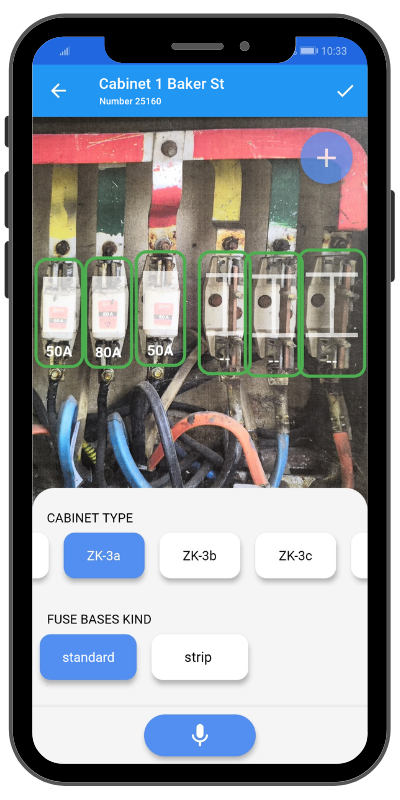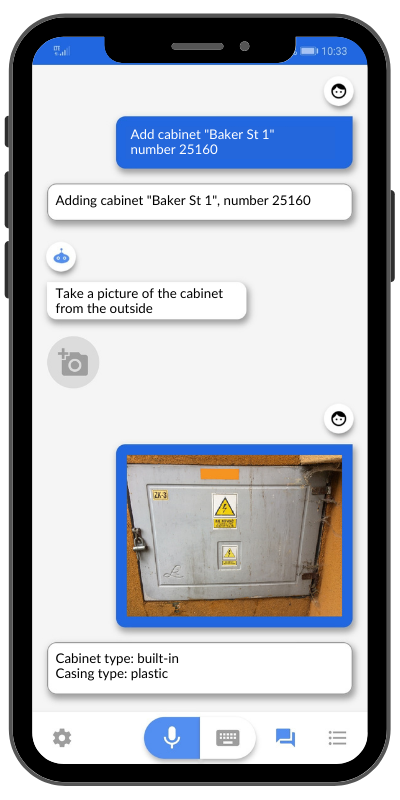Artificial Intelligence and Machine Learning solutions
Use the hidden potential of your data and automate tedious business processes with AI/ML technologies
Do you struggle to effectively implement Artificial Intelligence?
Artificial Intelligence transforms the way organizations function all around the world and demand for this technology increases 40% each year. AI can be useful if you have a lot of data but you can’t use it to inform business decisions due to the high costs and laborious nature of analyzing it. This technology will help you tackle many repetitive and time-consuming tasks that can’t be replaced by classic programs based on algorithms. Many companies face the challenge of finding the right team with the technical skills necessary to leverage the potential of Artificial Intelligence and Machine Learning. That’s where Globema comes in to help implement solutions based on AI/ML technologies.
Areas of application
The potential of Artificial Intelligence is limitless and can be used to solve a variety of business problems. Our team will identify your organization’s needs and match the best solution from different areas of AI/ML.
- Image recognition
If you often analyze visual data, this solution can be used to help identify, analyze, and classify data from pictures or videos. Features include picture classification, object detection, and text reading, also available in mobile and offline versions.
- Natural Language Processing
If your goal is to analyze large amounts of customer data (including consumer opinions), improving the quality of user experience, or leveraging customer engagement and business efforts, this solution will be perfect for you.
- Machine Learning
ML technology is great at solving complex problems, it collects and analyzes unstructured data and transforms them into valuable insights that improve the efficiency and profitability of your company.
- Document analysis
AI allows for categorizing data based on document content. This solution is also used to search documents for key attributes, such as dates or locations (addresses, parcel numbers). Other functionalities are searching for, identifying, and defining the position of specific objects in a document. AI can also analyze measurement point tables (even if they are poor-quality) to extract coordinates. In the case of diagrams or maps, this solution can automatically detect text, making it easier to enter and verify data such as station and connector names, section parameters, or voltage levels and magnitudes.
- Speech recognition and voice data entry
Speech recognition technology can create advanced chatbots and voice assistants. Our solutions are based on Google services and handle different languages. After you enter a voice command, you receive an answer from the right database. An example of voice data entry would be completing a digital form through speech. This technology recognizes synonyms and measurement units as well as different keywords spoken by the user. Applications can be activated with wake words, supporting hands-free voice commands.
- Predictive Modelling and forecasting
This solution analyzes large amounts of data, transforming them into useful predictions that can be used to optimize business operations. An example would be forecasting based on weather data used to predict device malfunction, energy production from renewable resources, or demand for energy or other commodities.
Our AI development process with business value in mind
There are two stages of project implementation. We start with verifying the business hypothesis through data analysis to prepare a business justification report for production implementation. Based on these results, you can make a well-informed decision before proceeding with stage two.

Stage one: verifying the business hypothesis
The start
→ Defining business hypotheses for verification, → Discussing the range of data → Discussing data semantics and the business context → Establishing the direction and methods for data analysis
Data analysis
→ Initial data and dependence analysis
→ Building prototype models
→ Model testing
→ Summary of the data potential
Conclusions
→ Report of the data analysis results → Recommendations for future data collection → Discussing business justification and initial decision about launching the stage of production implementation plan → Initial project and offer of the production implementation
Stage two: production implementation
Architecture project
→ Using AI/ML commercial services → Component structure of the solution → Implementation technology: Docker/Kubernetes → Production environment: Cloud, customer infrastructure, hybrid infrastructure
Building AI/ML solutions
→ Collection of learning and test data
→ Creating AI/ML models
→ Model testing and tuning
→ Performance and acceptance tests
Production launch
→ Integrations and changes in the business processes → Workshops → Production implementation → Monitoring results and periodic AI/ML models optimizations

Globema specializations
- Predictions based on weather forecasts
forecasting energy production from renewable resources, energy demand, energy flow in network nodes, and other circumstances dependent on the weather
- Intelligent document processing
document categorization, extraction/indexation, reading diagrams, extracting attributes, and geolocation
- Multi-source geospatial analyses and location-based services
forecasting energy production from renewable resources, energy demand, energy flow in network nodes, and other circumstances dependent on the weather
- Methods and tools for voice data collection
document categorization, extraction/indexation, reading diagrams, extracting attributes, and geolocation
- Solutions for intelligent networks
network operation simulation, prediction, and optimization
- Object recognition in images and videos
including satellite/aerial images
- Predictive maintenance
finding devices for inspection and replacement based on historical measurement and malfunction data
- Planning optimal routes
